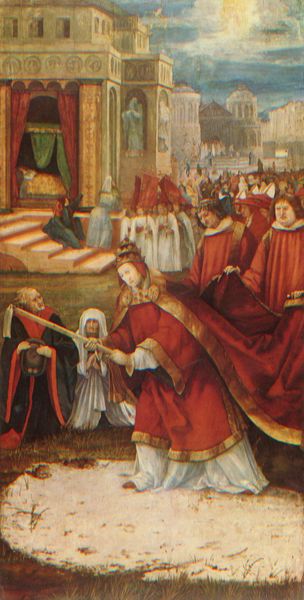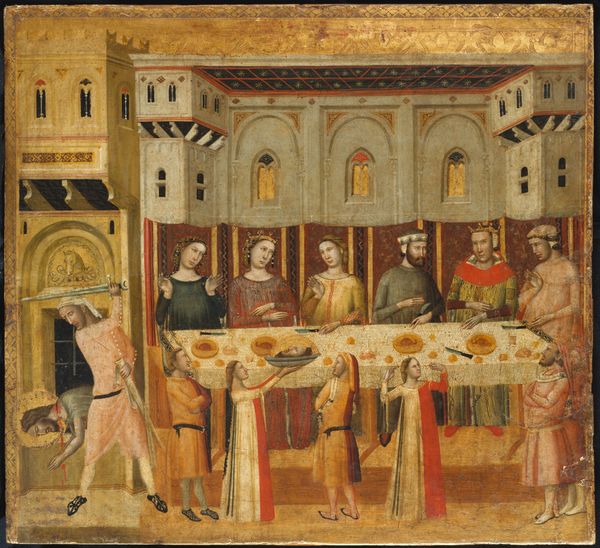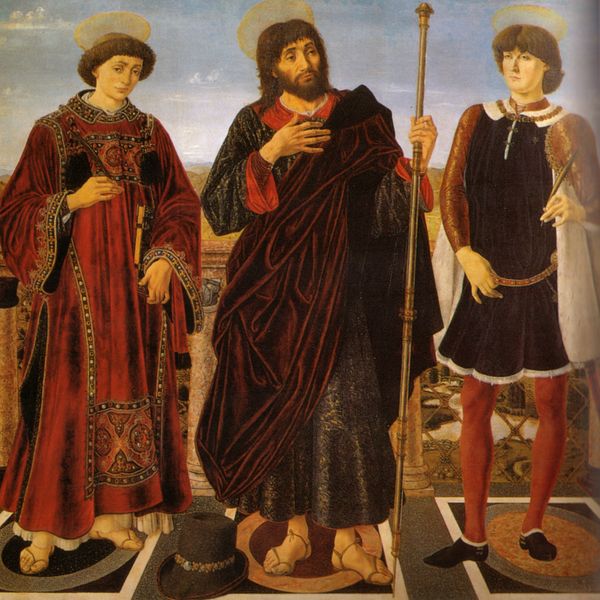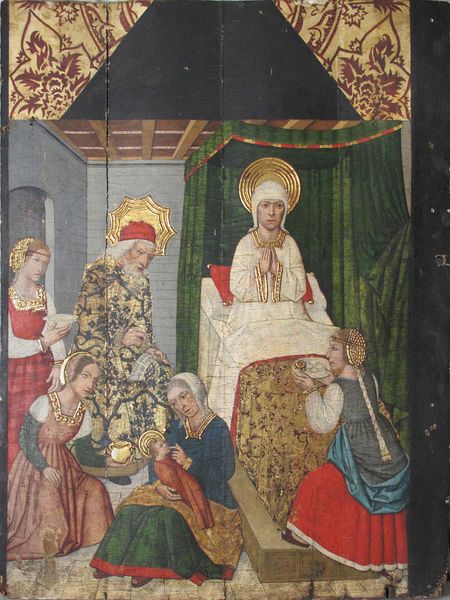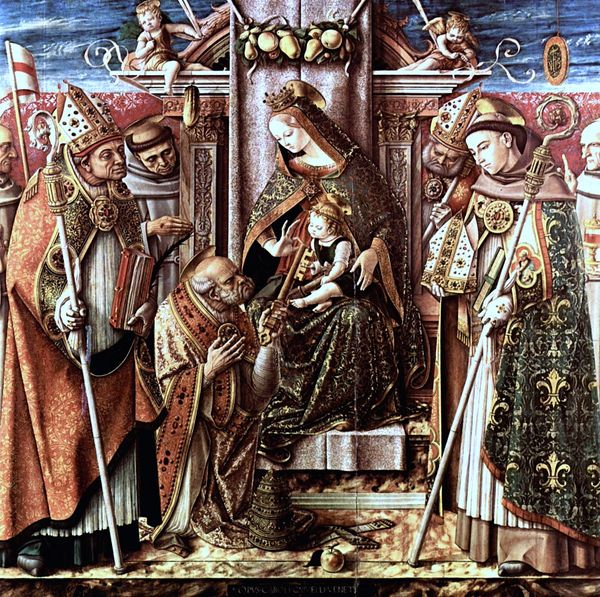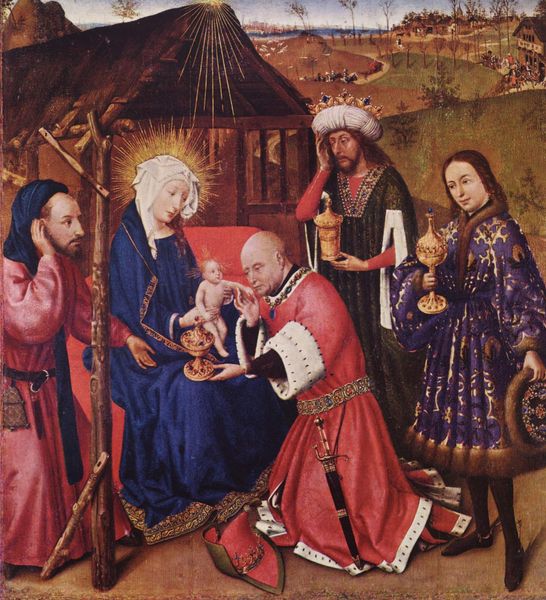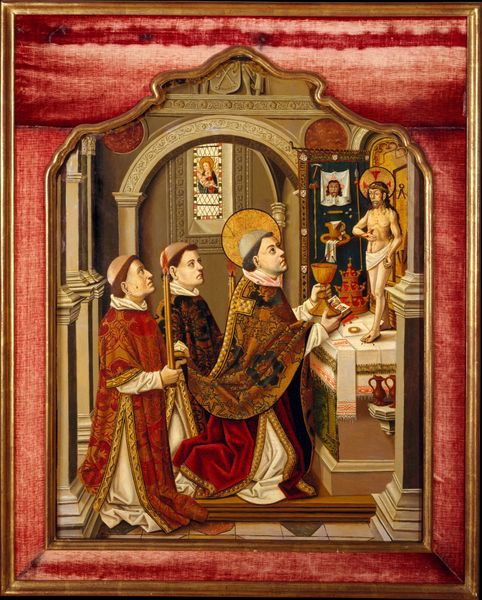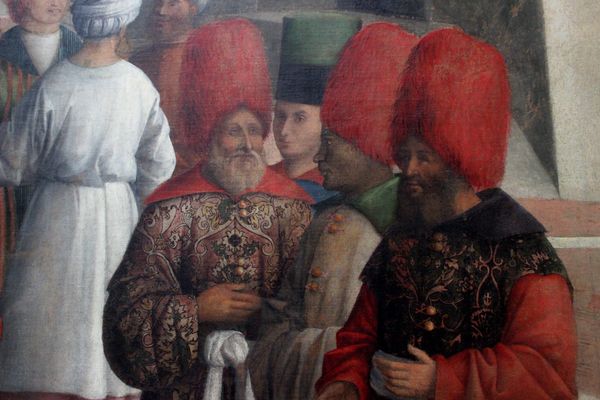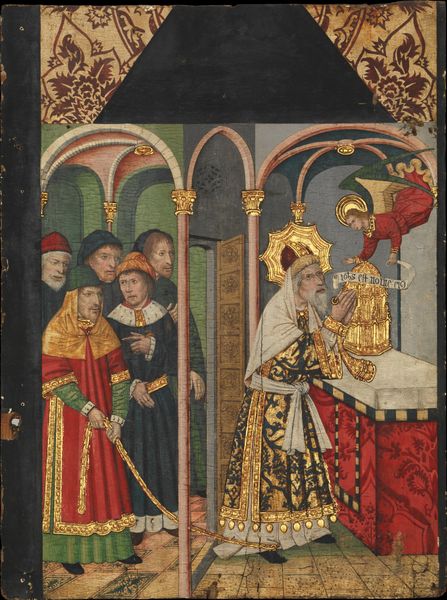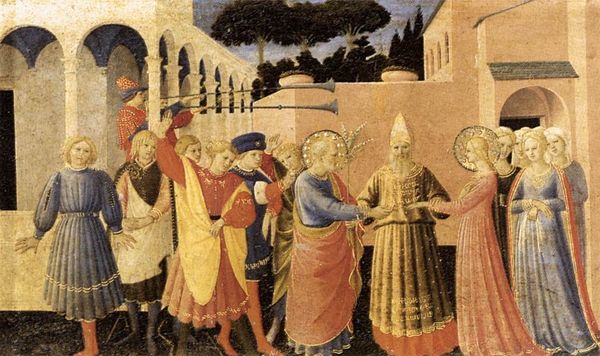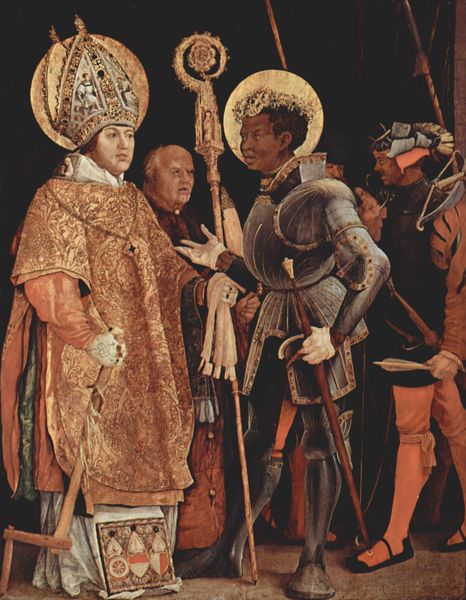
tempera, painting, oil-paint
#
portrait
#
medieval
#
narrative-art
#
tempera
#
painting
#
oil-paint
#
holy-places
#
oil painting
#
group-portraits
#
history-painting
#
northern-renaissance
#
academic-art
#
portrait art
Copyright: Public domain
Editor: Here we have Hans Holbein the Elder's "Katharinenaltar: Die hll. Ulrich und Conrad," painted in 1512, using tempera and oil paint. It strikes me as quite formal, almost theatrical, with its rigid figures and symbolic details. What do you see in this piece? Curator: I see a carefully constructed narrative steeped in the political and religious landscape of the early 16th century. Consider the placement of Ulrich and Conrad. Their presence isn't simply about religious devotion, but a clear statement on power and influence within the church. Editor: So, it's not just a depiction of saints, but a commentary on their role in society? Curator: Precisely. Notice the young man kneeling before Ulrich. Who is he? Why is he there? Holbein is embedding a very deliberate social dynamic here. The act of bestowing power or legitimacy wasn't neutral, but laden with assumptions of gender, class, and social mobility. Editor: I didn't even notice that. It's easy to overlook these things! Curator: It requires a shift in perspective – looking at it from the standpoint of how this painting reinforces or perhaps even challenges the power structures of the time. Who gets represented? How are they represented? What assumptions are being made about the viewer? Editor: It feels like I need to learn to read the visual cues like clues to a puzzle. Thanks. I'll certainly look at art differently now. Curator: I hope that recognizing the embedded assumptions can lead to a deeper understanding of history itself.
Comments
No comments
Be the first to comment and join the conversation on the ultimate creative platform.
